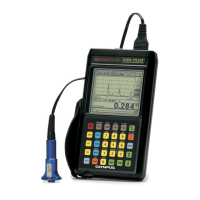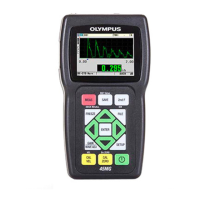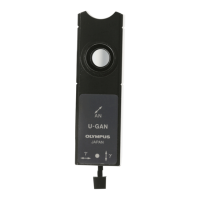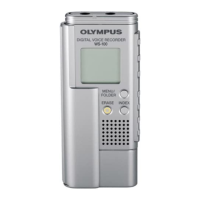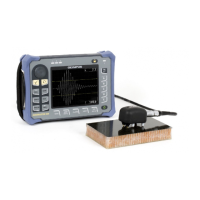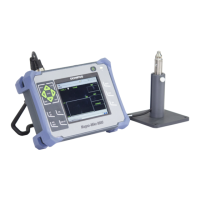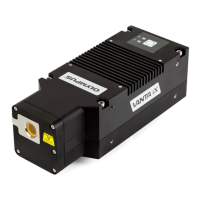DMTA-10004-01EN, Rev. D, November 2016
Basic Operation
71
The frequency at which you perform a transducer zero compensation procedure
depends on the rate of change of the internal temperature of the dual element
transducer. This is related to the material surface temperature, frequency of
transducer application, length of time the transducer is held in contact with the
material, and the accuracy that you want to obtain.
When measurements are made on surfaces that are significantly above room
temperature, the zero should be recalibrated on a regular basis. This is less important
for transducers part numbers D790-SM, D791-RM, D797-SM, and D798 than for other
transducers that have various types of resin delay lines.
For high temperature measurements, Olympus recommends that you develop a
transducer zero compensation schedule that takes these factors into account. For
example, use the D790-SM, D791-RM, or D797-SM for high temperature applications,
minimizing the frequency of the zero compensation. You can also use the D790-SM
and D791-RM for general purpose applications.
5.2.4 Material Sound Velocity and the Zero Calibrations
The 38DL PLUS performs a material gain optimization during the velocity calibration
procedure when this feature is activated (see “Configuring Measurement Parameters”
on page 127).
For dual element transducers, the material gain optimization (GAIN OPT in the
MEAS screen) evaluates the signal from the test block and automatically sets a
starting default gain based on the transducer sensitivity and material noise levels.
When the default gain required is outside of the allowable range, a message appears,
specifying that the transducer may not be functioning correctly.
The 38DL PLUS performs a calibration doubling verification to help prevent mis-
calibrating on thin samples. Doubling occurs when the instrument measures the time
to the second back-wall echo rather than detecting the first back-wall echo. The
38DL PLUS compares the measured time of flight to the expected time of flight based
on the current sound velocity. The 38DL PLUS displays a warning message if
doubling is suspected. Doubling can occur when measuring a thickness that is below
the minimum range of the transducer, or when a transducer is worn or low in
sensitivity.

